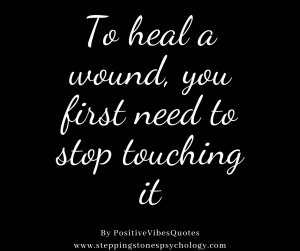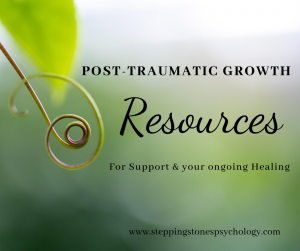Feeling constantly watched or terrified of public speaking? You might be experiencing scopophobia or glossophobia. Scopophobia is the intense, irrational fear of being stared at, often leading to social anxiety and avoidance. Imagine the dread of walking into a room, convinced every eye is on you, dissecting your every move. Glossophobia, on the other hand, is the fear of public speaking. This is not just pre-show jitters; it is an intense paralysing and debilitating fear that can manifest physically with sweating, trembling, and a racing heart. The fear triggers a visceral reaction, a deep-seated physical response that goes beyond mere anxiety. The body enters a full-blown fight-or-flight response, an automatic, primitive survival mechanism triggered by the sympathetic nervous system in response to a perceived threat.
Both phobias can severely impact daily life, limiting opportunities and connections. Understanding these fears is the first step towards managing them, often through therapy, gradual exposure or coping strategies. I know of this first-hand from personal lived experiences of navigating both of these phobias.
My personal experience with phobia was not about social anxiety or a general lack of confidence. I am a confident person who genuinely enjoys connecting with people, and this was not simply a case of nerves. What I faced was far more complicated. It was deeply rooted in traumatic memories – moments where being the focus of attention directly translated into being threatened and unsafe. The spotlight, for me, was not about performance or judgment; it was a chilling echo of past dangers. When the attention shifts to me, it is not just a flicker of nerves; my entire body reacts with a visceral, primal alarm, as if I’m suddenly in imminent physical danger. It is a deep-seated, automatic response, a terrifying echo of past traumas where being in the spotlight meant feeling utterly vulnerable and threatened, even when there is no actual danger in the present moment. It is a trauma response in its purest form. An Emotional Flashback. A PTSD Attack. My entire body instinctively shifts into a flight-freeze state, which, at its most extreme, leads to dissociation.
We all experience fear and anxiety, those butterflies in our stomach or the racing thoughts that hold us back. It is a natural human response, but sometimes these feelings can become overwhelming, stopping us from living life to the fullest. Imagine a life where those fears do not dictate your choices, where you can step forward with confidence, even if your knees are trembling.
This year, I committed myself to confronting one of my biggest fears. While my approach may not suit everyone, it has been incredibly effective for me. I’ve found immense benefit in gradual, consistent exposure.
By “consistent,” I mean regularly placing myself in uncomfortable situations until they no longer felt entirely alien. And by “gradual,” I ensured I pushed my boundaries incrementally; pushed myself out of my comfort zone gradually, rather than diving headfirst into the deep end. For example, I’ve been consistently attending networking and public speaking events. Initially, the mere thought of speaking or feeling that I am in the ‘spot light’ terrified me. Yet, more recently, I’ve been able to stand up and practise public speaking in front of a small group without feeling overly threatened.
Taking that crucial first step towards facing your fears, no matter how small, is an act of incredible bravery, and you certainly don’t have to go through it alone.
If this is something you also like to work on, my recommendation would be to start by exploring therapy. Traditional talking therapy, such as counselling, can provide a safe space to share your story, and begin to understand your fears and anxieties. This initial exploration can be invaluable in making sense of your experiences. To have a non-judgemental safe space to feel seen and heard can be profoundly healing.
Following this, you might consider Phase 2 work with a specialised therapist. For instance, Eye Movement Desensitisation and Reprocessing (EMDR) with a therapist trained in EMDR protocol for phobias can be highly effective. Alternatively, a hypnotherapist specialising in phobias could offer a different but equally beneficial approach.
Once you’ve had the opportunity to process these deeper issues and gain clarity, you could then use services like The Public Speaking Academy, run by Lee Furness. Lee offers a compassionate and empathetic approach to public speaking, coupled with practical support. Lee always creates a wonderfully warm and encouraging space. Thanks to him consistently creating a safe and nurturing environment, we were all empowered to explore beyond our comfort zones allowing us to comfortably push our boundaries. There is also a spirit of kindness, encouragement and unwavering support by the entire group, which makes it feel very safe.
Remember, you deserve to feel empowered and overcome these challenges. However, it is absolutely crucial to proceed at your own pace, ensuring you feel safe throughout the process. This is especially vital for trauma survivors, where the sense of safety is paramount. The key is to find a balance: Gently pushing yourself beyond your comfort zone, but never too much, too soon. Always prioritise your feeling of security and safety. It is always important that you have a choice in how you approach your healing journey because having autonomy is key to feeling secure. Having a sense of control, or having choices, is instrumental in establishing safety.
I would like to take this opportunity to extend a special thank you to my dear friend and colleague, Siobhan, whose support and encouragement empowered me to take this step. She was instrumental in my first public speaking experience, not only inviting me but also accompanying me to the event. Siobhan put my mind at ease by explaining that Lee’s public speaking events were far from typical; they were informal, friendly, and carefully curated to be a safe space. The fact that my initial experience was positive and that I didn’t have to face it alone truly made all the difference. It made it easier for me to attend all the other public speaking events on my own. Bringing someone along with you the first time might be helpful to you too.
I confessed to my son, my blog’s editor, that I felt nervous and exposed publishing today’s post due to its self-disclosing nature. He wisely responded, “Your clients and prospective clients should see you as human, not the Almighty Therapist who Knows All! 😂” I hope this glimpse into my own vulnerability has been helpful to you.
Attached is a picture of Lee Furness, my lovely Public Speaking Coach. You can contact him here: https://www.facebook.com/mrleefurness For those who might not yet be ready for in-person sessions, Lee offers one-on-one public speaking coaching via Zoom. He is also about to launch a five-week online group coaching course.
©2025 Stepping Stones Psychology – All Rights Reserved.




